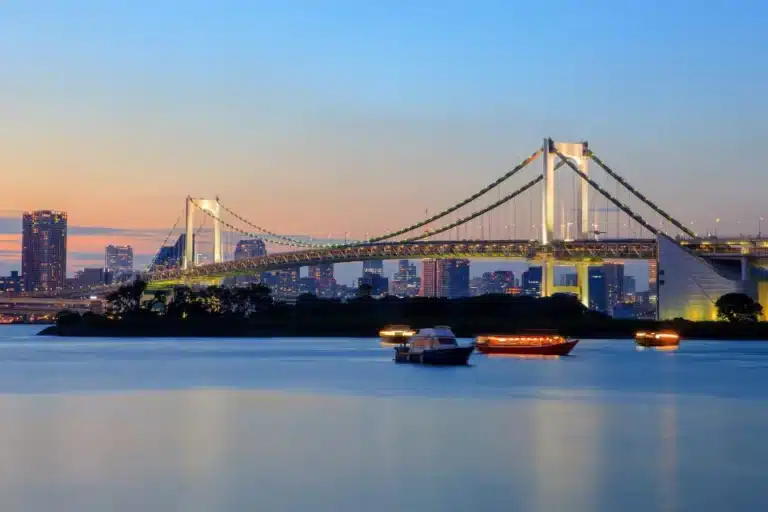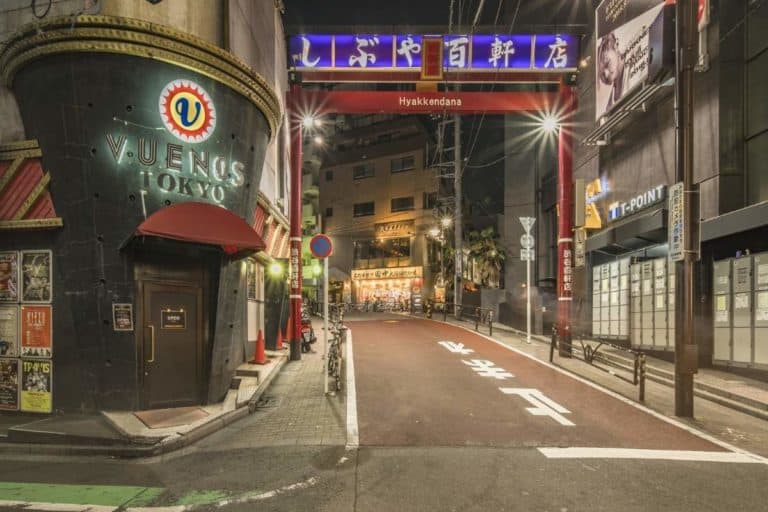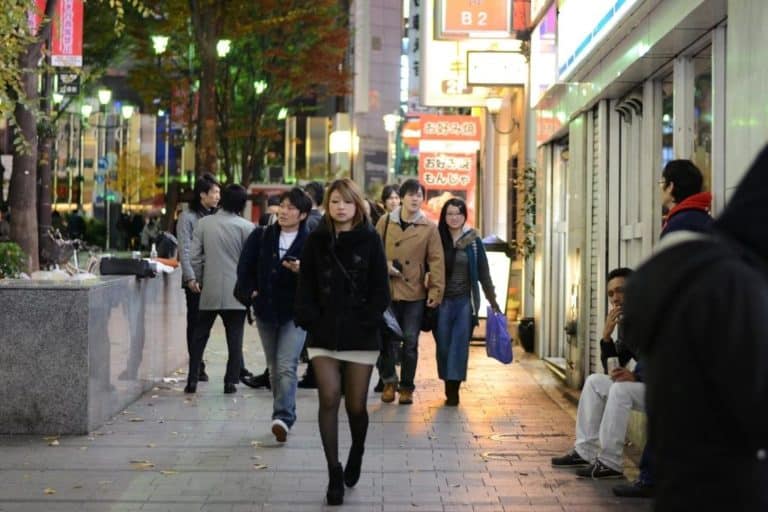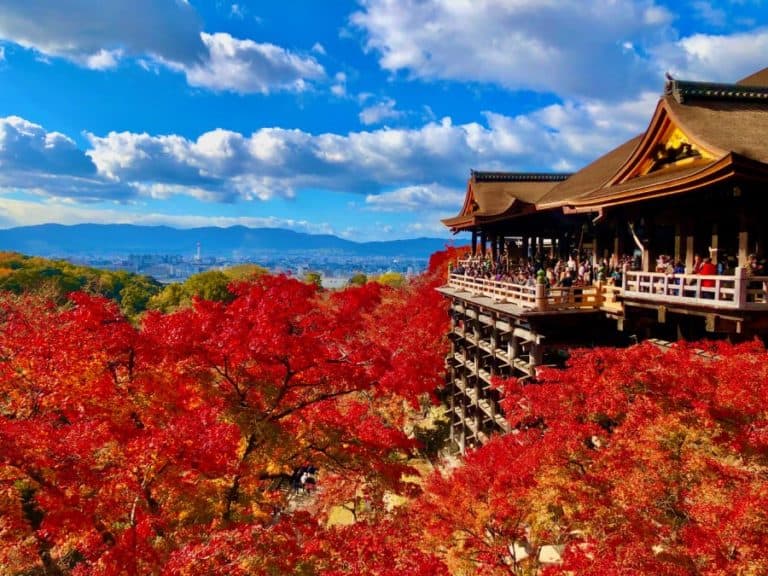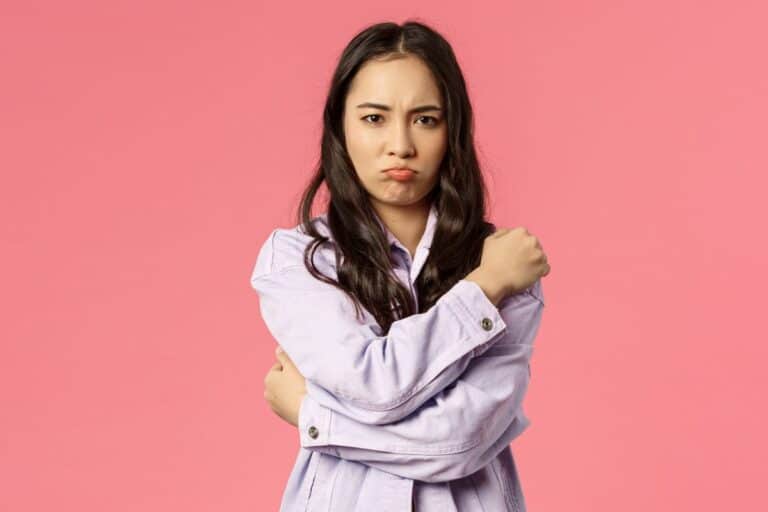20 Biggest Cities in Japan by Population and Area
Japan is a beautiful country with many amazing cities.
But which one should you stay in?
This article will overview the top 20 bigger Japanese cities and what they offer tourists, making it easier for visitors to decide where they want to go!
Japan has some beautiful places worth visiting, but there are so many different destinations that finding out about them can be hard enough as it is.
Luckily this list makes things easy by giving an overview of Japan’s most significant cities – all ranked according to size and population.
List of 20 Biggest Cities in Japan
| City | Prefecture | Area | Population |
|---|---|---|---|
| Tokyo | Tokyo | 2,194.07 km2 (847.14 sq mi) | 13,960,236 |
| Yokohama | Kanagawa | 437.38 km2 (168.87 sq mi) | 3,732,616 |
| Osaka | Osaka | 225.21 km2 (86.95 sq mi) | 2,668,586 |
| Nagoya | Aichi | 326.45 km2 (126.04 sq mi) | 2,327,557 |
| Sapporo | Hokkaidō | 1,710.01,121.26 km2 (432.92 sq mi) | 1,973,432 |
| Fukuoka | Fukuoka | 343.39 km2 (132.58 sq mi) | 1,588,924 |
| Kawasaki | Kanagawa | 143.01 km2 (55.22 sq mi) | 1,531,646 |
| Kobe | Hyōgo | 557.02 km2 (215.07 sq mi) | 1,524,601 |
| Kyoto | Kyoto | 827.83 km2 (319.63 sq mi) | 1,474,570 |
| Saitama | Saitama | 217.43 km2 (83.95 sq mi) | 1,324,854 |
| Hiroshima | Hiroshima | 906.68 km2 (350.07 sq mi) | 1,199,391 |
| Sendai | Miyagi | 786.30 km2 (303.59 sq mi) | 1,091,407 |
| Chiba | Chiba | 271.77 km2 (104.93 sq mi) | 979,768 |
| Kitakyushu | Fukuoka | 491.95 km2 (189.94 sq mi) | 940,978 |
| Setagaya | Tokyo | 58.0858.06 km2 (22.42 sq mi) | 939,099 |
| Sakai | Osaka | 149.9149.82 km2 (57.85 sq mi) | 828,741 |
| Niigata | Niigata | 726.10726.45 km2 (280.48 sq mi) | 797,591 |
| Hamamatsu | Shizuoka | 1,558.06 km2 (601.57 sq mi) | 791,707 |
| Sagamihara | Kanagawa | 328.8328.91 km2 (126.99 sq mi) | 720,986 |
| Shizuoka | Shizuoka | 1,411.90 km2 (545.14 sq mi) | 690,881 |
1) Tokyo (Tokyo Prefecture)

Tokyo’s dense, sprawling city is Japan’s capital and largest metropolis. It has more people than any other Japanese city, with a population density that rivals New York City’s, making it one of the world’s most populated cities.
This makes it one of the biggest cities in both population and size.
The Greater Tokyo Area covers a whopping 38% of Honshu’s landmass!
The Izu and Ogasawara Islands are also part of Tokyo.
Before 1868, it was known as Edo. Still, that year, Tokugawa Shōgunate (a feudal government) established its central government, making Edo one of the wealthiest cities in all of Asia.
Tokyo is a city that offers infinite shopping, entertainment, culture, and dining choices.
Asakusa’s history can be appreciated in the many excellent museums around Tokyo and temples and gardens from centuries ago.
Contrary to common perception, however, several green spaces are within easy reach of the most prominent tourist attractions.
Not to mention parks on its outskirts offer an escape for visitors looking for some peace & quiet after spending all day exploring this bustling metropolis.
2) Yokohama (Kanagawa Prefecture)

Almost three million people live in Yokohama, the second-largest city in Japan.
It may be less than half an hour south of Tokyo by train, but don’t let that discourage you from going there!
I’m not lying when I say this place is one of a kind, with a history dating back Edo Period during Japanese isolationist policies.
The city of Yokohama was a small fishing village until the late 1800s.
It is one of Japan’s major cities and has some exciting places to visit, like Chinatown, which is popular with ex-pats.
3) Osaka (Osaka Prefecture)

Osaka, Japan’s third-largest city after Tokyo and Yokohama, is best known for its nightlife.
The Osaka Castle tells about the history of this ancient town that was once one of feudal Japan’s most influential cities in the 16th century.
There are tons to see when visiting with your loved ones, from tasty food to exciting shopping, so make sure you don’t miss out on any part!
4) Nagoya (Aichi Prefecture)

Nagoya is Japan’s fourth most populated city.
This bustling metropolis has two million inhabitants and was developed as the castle town of Owari, one of three branches to rule over the Edo Period during its development.
Nagoya suffered from extensive air raids in 1945, which destroyed many of its historic buildings, including many historical landmarks.
In the past, Nagoya was known as a sleepy town. But since bad times in Japan and other parts of Asia, it’s become an economic powerhouse that houses top-level corporations like Toyota!
5) Sapporo (Hokkaido Prefecture)

Sapporo, Japan’s fifth-largest city and the capital of Hokkaido, has many exciting things to see. For example, wildlife parks allow visitors to observe animals up close in their natural habitat.
Sapporo is a city with plenty of attractions to offer.
There are many food festivals in the summer, and during winter, Sapporo’s population doubles as they celebrate their annual Snow Festival.
Sapporo was born in the late 19th century.
With just seven residents at its founding, it’s one of Japan’s youngest major metropolitan areas. It is home to a population that rivals much larger Japanese supercities such as Fukuoka or Kyoto.
6) Fukuoka (Fukuoka Prefecture)

With 1.5 million people, Fukuoka is Kyūshū’s largest city and Japan’s eighth-largest population center.
Fukuoka is made up of two towns. One is Fukuoka’s castle town on the Nakagawa’s west bank and Hakata’s merchant town on the east bank.
But in 1889, they merged to become Fukuoka. The name Hakata is still often used today, though.
7) Kawasaki (Kanagawa Prefecture)

Kawasaki is a city in Kanagawa Prefecture. It is between Tokyo and Yokohama.
The city center is near the Tamagawa River, but it becomes more suburban the further you get there.
There are several major tourist attractions around Kawasaki, such as the Kawasaki Daishi temple and Nihon Minkaen open-air museum.
8) Kobe (Hyōgo Prefecture)

Kobe is a small but prosperous Japanese metropolis and the capital of Hyogo Prefecture.
Kobe has been an important port for many centuries.
It became one of Japan’s first ports to trade with other countries from Europe, Russia, China, etc., way back during the 19th century after its modernization made such trading possible.
In 1995, the Japanese city of Kobe was hit by a terrible earthquake that killed thousands and left many buildings in ruins.
Nowadays, it’s hard to tell where or when this devastation occurred because so little evidence remains today.
Kobe is a small but prosperous Japanese metropolis near Osaka–a larger bridgehead into the Japanese Mainland.
9) Kyoto (Kyoto Prefecture)

Kyoto is one of Japan’s ten largest cities known for its temples.
It was the capital for a long time and where their Emperor resided, but now it has 1.5 million residents in modern buildings like skyscrapers and high-rises.
Many fires or wars had destroyed Kyoto, but luckily, it never suffered an atomic bomb attack during WWII when the battle shifted to Hiroshima, which led to its destruction instead.
Kyoto is a city with many attractions and places to visit.
From the Gion District, where geishas are abundant (Geisha being the traditional Japanese female entertainer), or at Fushimi Inari Shrine, one of Kyoto’s most famous shrines, which houses more than 33,000 torii gates.
10) Saitama (Saitama Prefecture)

Saitama is a city in Japan that was formed when Urawa, Omiya, and surrounding towns merged.
It’s primarily used by those who live there or work near Tokyo since it only takes about 30 minutes on the train from Saitama Station to Shinjuku Station, where most people commute into town for their jobs every day.
Omiya Station is a station that connects many trains.
It is the busiest one in Kanto Region. It has the Tohoku Shinkansen, Joetsu Shinkansen, and many other trains.
This makes it an essential place because many people use it every day to go places.
Despite being a small and relatively unknown city, Omiya offers some great attractions for those interested in sightseeing.
The Railway Museum is home to the world’s most extensive model railway system with over 2 million meters of track!
Plenty of other museums are worth checking out, like the Toyama Sculpture Park or the informative walk around The Omiya Bonsai Village.
11) Hiroshima (Hiroshima Prefecture)

The city of Hiroshima is one with a tragic history. This was the first atomic bomb site, killing over 100 000 people and injuring many more on August 6th, 1945.
The city became known worldwide as it entered into an unenviable distinction from that day forward.
The war destroyed Hiroshima terribly, and people were unsure if the city would ever be habitable again.
In the center of town stands Peace Memorial Park with a name reflecting what they hope for their future: peace among all residents who will now live together peacefully after such devastation previously caused by warfare.
12) Sendai (Miyagi Prefecture)

Sendai is one of the country’s largest cities, with roughly 1 million inhabitants.
This city was founded in 1600 by the man Masamune. He would later become powerful and rule to establish his power over Japan.
Many tourist attractions are related to him, including Sendai Castle (the family home), preserved as it looked when he lived there centuries ago.
Sendai, a coastal city close to the epicenter of Japan’s massive earthquake in March 2011, was devastated by its accompanying tsunami.
The waves reduced most tourist spots and landmarks near Sendai Bay into rubble but did not cause significant damage within the town center.
Less than an hour northeast of central Sendai is Matsushima Bay – one of three scenic views that define Japanese beauty according to traditional ideals (Matsushima being number 3).
13) Chiba (Chiba Prefecture)

Chiba is famous for being home to Japan’s two Disney parks and its longest stretch of sandy coastline. There is also a mountain there which towers over the whole city. (Mt. Chiba)
Nokogiri with “Hell Peek Point.” Located adjacent to Tokyo, Chiba also has its main international airport making it a perfect entry point for most travelers!
The rustic Boso Peninsula has a wealth of hidden beaches, caves, and luxury glamping sites.
The peninsula juts dramatically into Tokyo Bay on its eastern side while stretching along Japan’s Pacific Ocean coastline in Minami Boso (the southern part) on its western end.
Seaside getaways are sure summer delights, but lesser traversed areas await too: a visit to Kameiwa Cave is well worth it for natural wonders like this alone!
14) Kitakyushu (Fukuoka Prefecture)

Kitakyushu is the industrial hub of Japan. It houses a high concentration of factories, and many people work in its manufacturing industry instead of other economic sectors such as agriculture or fishing.
Kitakyushu was first formed with five cities united under one banner for economic growth; it has grown into an important trading port that bridges Honshu and Kyushu both physically (through trade) and economically through its contribution to the Japanese economy at large.
In the Meiji Period, the government recognized how advantageous Kitakyushu was geographically and quickly built port facilities and railroad infrastructure.
This led to the further development of commerce with a newfound industrial sector for Japan’s then-booming economy.
Thanks to preserving many old buildings from that era around Moji Port, visitors can experience an aura of decades past when they walk near it!
15) Setagaya (Tokyo Prefecture)

One can’t go to Tokyo without at least visiting Setagaya.
Home to over 900,000 people is the most populous ward in all 23 communities that make up this bustling city. It has a population density of 15,497.5 persons per square kilometer — one of the highest densities among its neighbors, Tokyo.
The areas closer to central Tokyo are trendy neighborhoods with younger Japanese residents who favor Western culture.
Hence, they enjoy their 20s or 30s there rather than just living out their days elsewhere when they get older, like what many believe should be done traditionally.
16) Sakai (Osaka Prefecture)

The city of Sakai is a vibrant and bustling town.
It has an intimate history steeped in rich culture, with the legend founded by Sen no Rikyu himself!
The first tea master to give Japan its iconic green tea ceremony would be proud of how much reverence his home now receives from tourists across the globe as they flock here for this graceful tradition.
Sakai’s most remarkable claim to fame?
One might say that several distinct features make Sakai extraordinary, but one aspect that stands out is undoubtedly its gardens, both traditional and modern in design.
After all, Sakai is situated within the Kansai region, which houses some of Japan’s most beautiful landscapes!
This city has a long history of cultivating high-quality tea leaves, so it should be no surprise that there are many lovely green spaces to explore here with one’s eyes and soul.
This city is so green that it’s often called the “Sakai City of Gardens.”
17) Niigata (Niigata Prefecture)

Niigata is an excellent destination if you’re looking to escape the hustle and bustle of Tokyo.
Just over one hour by bullet train, it’s a natural delight with popular ski resorts like Echigo-Yuzawa (an excellent place for beginners) or Hoshitoge that offer plenty of fresh snow cover in winter.
Beyond mountains lie scenic beaches stretching along the coast where ferries operate to rustic Sado Island while seafood, rice, and wine sake are local specialties!
If visiting during cherry blossom season, do not miss some fireworks!
18) Hamamatsu (Shizuoka Prefecture)

Hamamatsu is a bustling industrial city in Shizuoka Prefecture.
It has long been known for its musical instrument factories. Yamaha and Kawai are prominent; the motorcycle production industry also thrives here as Honda, Suzuki, and Yamaha have factory headquarters nearby.
Historically it served to connect two crucial highways:
- Tokaido, which runs east-west across Japan from Tokyo on one side of Honshu Island up past Kyoto before heading northward towards Niigata near Hokkaido
- Shinano highway runs westwards along the Tenyu River connecting Matsumoto at Nagano, where you can go south to the Tokyo area and Shizuoka City.


